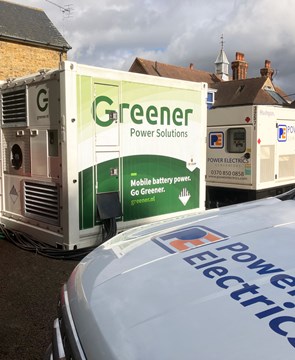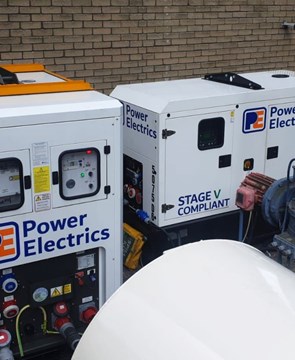Understanding Your Generator Spec Sheet
A standby generator could be an important asset to your business, but choosing the correct one for your requirements isn’t always a simple task.
This article will take you through a standard specification sheet and break down the technical jargon.
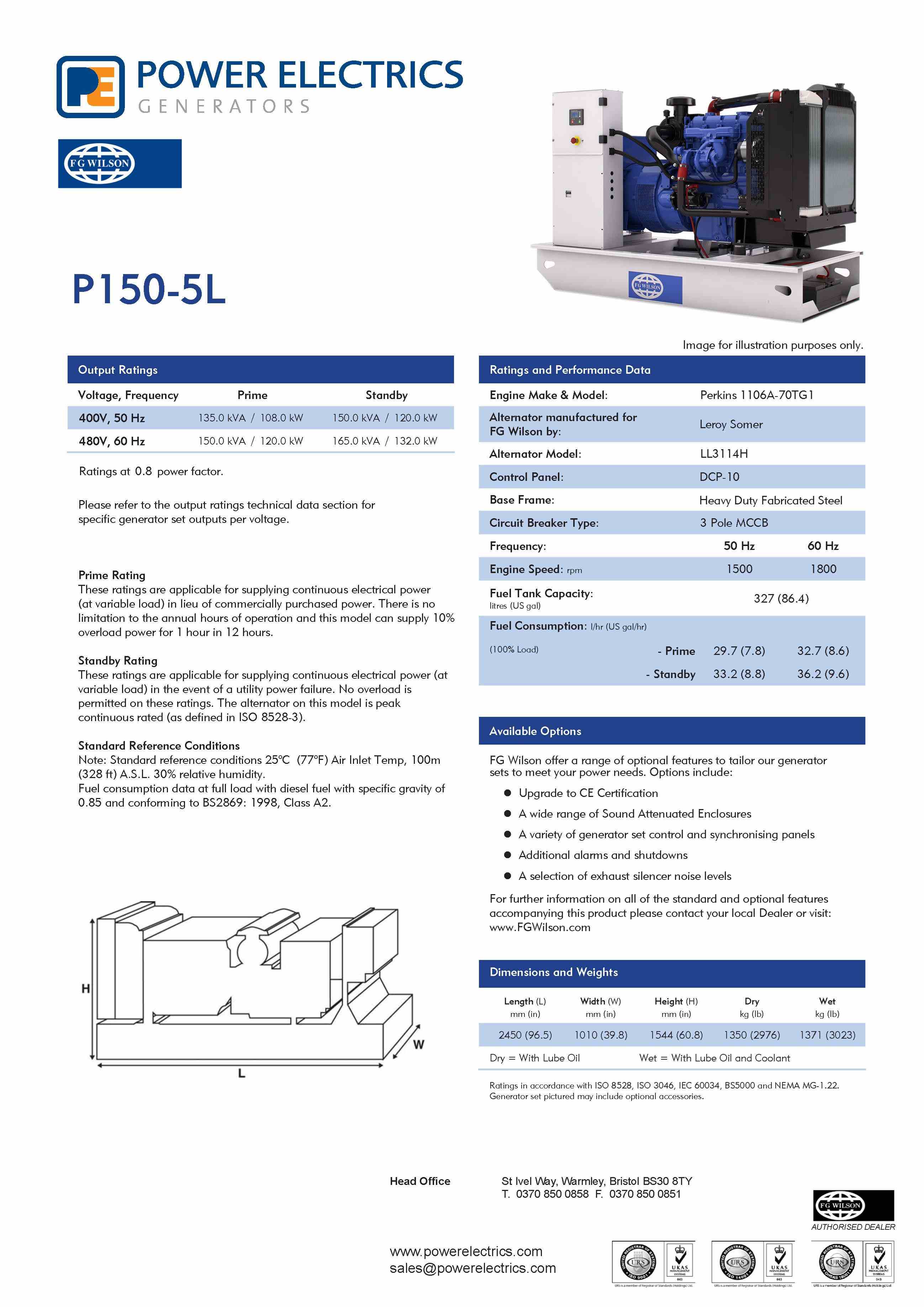
As all specification layouts differ slightly, we will focus on a typical FG Wilson spec sheet. You can visit the sales page to view spec sheets for any model of FG Wilson generator ranging from 5.5kVA to 2500kVA.
Model Number
The first and normally most identifiable element of a specification sheet is the model number. Let’s take the below P150-5L as an example. The letter ‘P’ indicates that the generator engine is manufactured by Perkins. Most FG Wilson generators begin with the model ‘P’, although the recent F range does not include a Perkins engine; (it could display F35-1, for example).
The next element of the model represents the number directly after the letter. This represents the standby rated kVA of the generator.
Finally, if the number is odd it means the generator is not EU Emissions compliant, whereas an even number demonstrates that the product is EU Emissions compliant. The higher the number, the more recent the generator is in build versions.
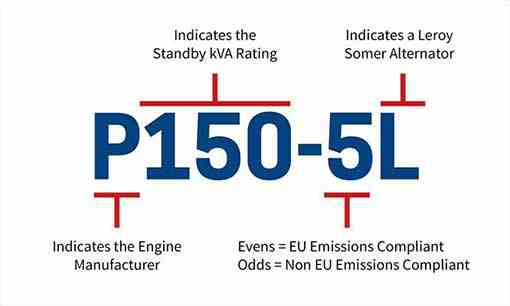
Prime Rated Power (PRP)
Prime Rated Power represents what the generator is capable of when it has an “unlimited run time”. This figure is important when the generator is being used as a primary power source. The Standby rating represents what the generator is capable of for shorter periods of time, which are often required in a standby situation when the main source of power is lost.
Ratings and Performance Data
In this area of the specification sheet, main performance criteria is highlighted. This includes the engine brand and model, details about the alternators, fuel capacity and consumption. Below we have focused on these areas in more detail.
Engine Make & Model
Most FG Wilson engines are manufactured by Perkins, although other generators, including the FG Wilson F range will list the manufacturer of the engine in this area. Along with this information is the model number, to learn how to read the Perkins model number click here to download the Perkins Engine Number Guide.

Alternator Manufacturer & Model
In the case of the specification sheet we are examining, the alternator that comes as standard is a Leroy Somer LL3114H. The Alternator is the part of the generator that produces the electrical output from the mechanical input supplied by the engine.
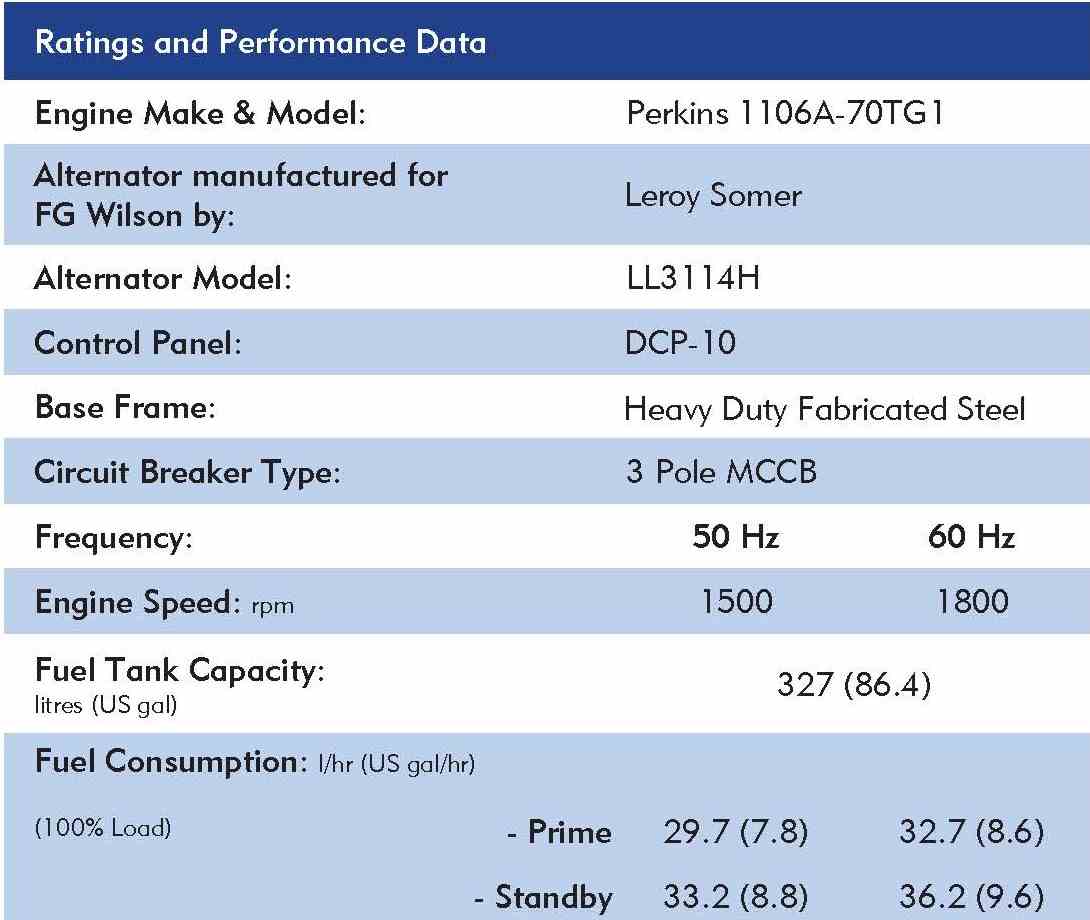
Control Panel
The control panel is the interface to the generator and contains the provisions for electrical outlets and controls. The PowerWizard 1.1+ on this generator allows the operator to monitor and control all generator functions from a virtual control panel on a computer. Various other control panels are available which offer different functionality for the end user.
Frequency & Engine Speed
The Frequency of a diesel generator must be either 50 Hz or 60 Hz, with the latter being more typical in the United States and 50 Hz in Europe. As you can see from this spec sheet, the P150-4 has 50 Hz, although some generators can vary the frequency in order to match that of the appliances that they power; these are commonly known as electronic variable speed generators. The frequency of the generator determines the engine speed, which in this case is 1500 revolutions per minute.
Fuel Tank Capacity & Consumption
The final two elements of Ratings and Performance Data is Fuel Tank Capacity and Fuel Consumption. Nearly all diesel generators come with a fuel tank, and in the case of the P150-5L, the fuel tank is at the base of the generator with a capacity of 327 litres. Fuel Capacity is demonstrated when the generator is used either as prime power or standby, both on 100% load.
Specification sheets typically go into more detail on the information referenced in this blog, and it is always best to seek technical support with any element you do not understand when buying a generator. Power Electrics has a team of sales support staff and project managers who would be happy to assist you with any questions you may have about a generator specification.


